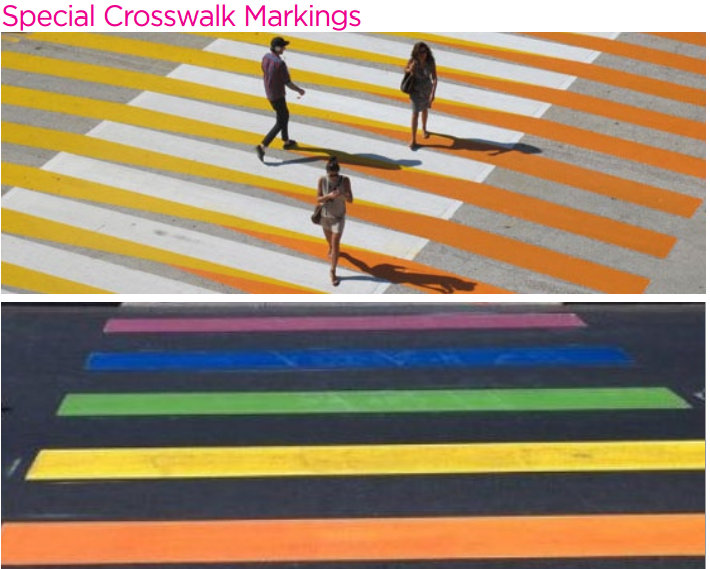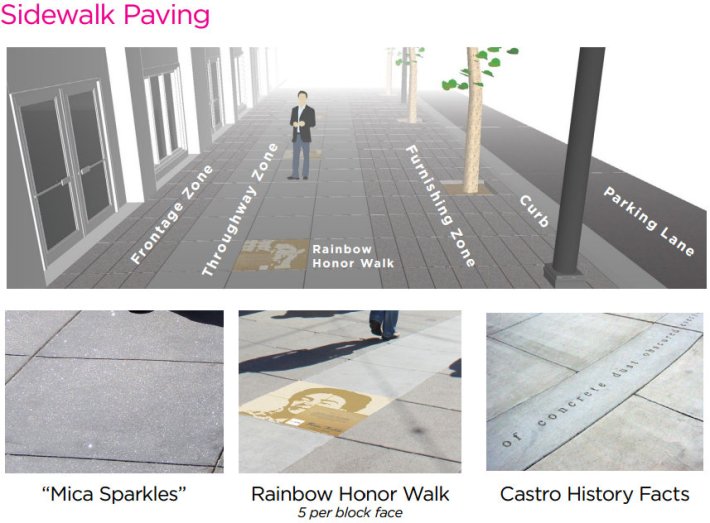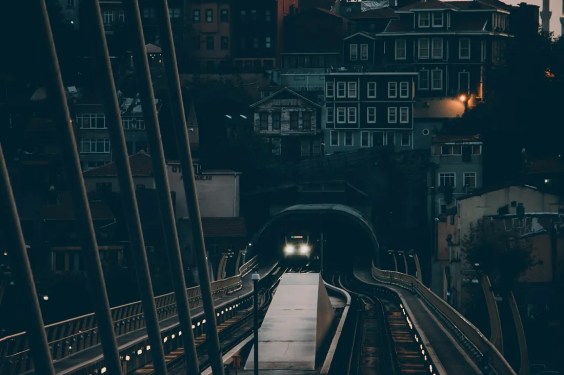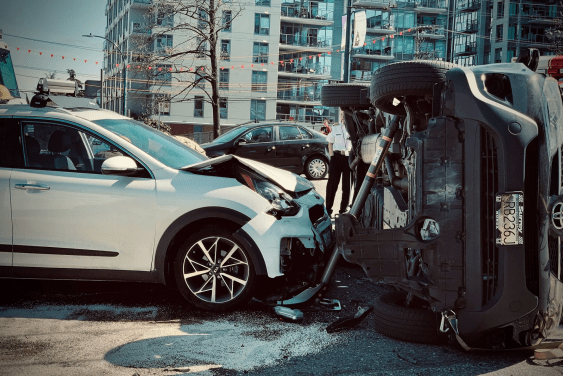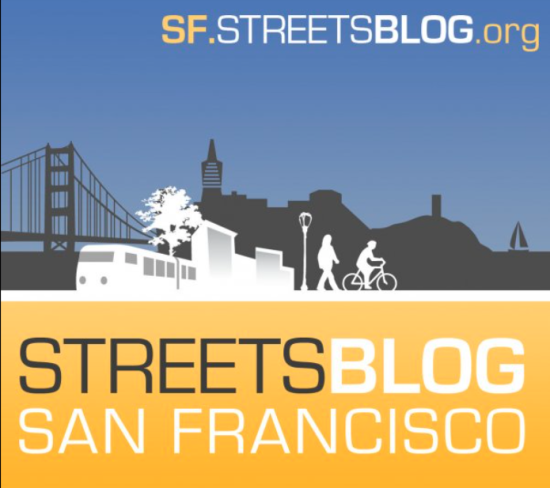City planners presented detailed options for pedestrian upgrades on Castro Street at a community meeting last night. The improvements, set for construction next year, will include sidewalks as wide as 22 feet, new trees, and pedestrian-scaled lighting.
By reclaiming space from Castro's excessively-wide traffic lanes, the plan is expected to provide more room for people on Castro's often overcrowded sidewalks, calm motor traffic, and improve safety. Castro, between 17th and 19th Streets, sees some of the heaviest foot traffic of the city's neighborhood commercial streets, even exceeding Columbus Avenue in North Beach, said Nick Perry, project manager for the Planning Department. With the proposed improvements making Castro more attractive to visit, those numbers are expected to jump, judging by the success of similar projects like the 2009 streetscape improvements on Valencia Street.
According to a Planning Department survey following the first community street design workshop in January, over 93 percent of respondents like the basic plan (76 percent "strongly" like it). At last night's meeting, agency staff sought feedback from residents on options like the types of trees to plant, pavement treatments (rainbow-colored crosswalks, anyone?), and where to put sidewalk bulb-outs.
Along Castro, the plan would repurpose excess road space that currently tends to be taken up by double-parkers. But since the roadbed will be narrowed, the SF Transit Riders Union is concerned that unless further steps are taken, the 24-Divisadero and 35-Eureka lines could face more delays as buses wait behind drivers while they parallel park.
"It's a great streetscape design," said Peter Straus, a TRU member and retired Muni service planner, "but by narrowing it, all of the parking movements, in and out of parking spaces, especially where you have high turnover on a commercial street, where they're all moving through that one lane, it's inevitably going to lead to significant delays to Muni operations."
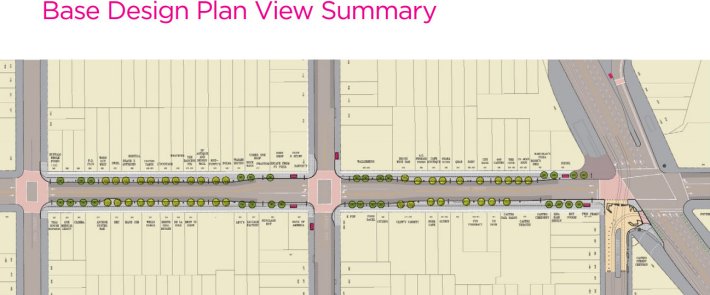
Straus suggested a treatment used more commonly in cities like Los Angeles to provide a buffer between curbside parking spaces, making it easier for drivers to pull in and out of them more quickly. Straus and an SFMTA staffer said it's usually done by painting sections of the curb red or by adding hatched markings on the pavement.
The current proposal for Castro, however, would actually shorten the current length of parking spaces in order to preserve all but one spot. Under Straus's proposal, some parking spaces would have to be removed, which he acknowledged could upset merchants. But without such measures, he said, the city is favoring car parking over Muni's reliability.
"Frankly, the city should not put itself in a position where it's compromising Muni for the sake of retaining maximum parking spaces," said Straus. "That's actually a violation of the transit-first policy, and a violation of the City Charter."
To facilitate curbside truck loading, the proposal would add seven loading zones on and near Castro, clustered to accommodate large trucks, Planning Department staff said. Loading hours may be kept to a minimum to maximize the number of hours the space is available for private car parking.
City staffers also presented four options for how to spend a one portion of the project's budget: A pair of bus bulb-outs on 18th at Castro (with stops moved to the near side of the intersection); bulb-outs and a "gateway" median at 19th and Castro; more permanent improvements for Jane Warner Plaza at Castro, 17th, and Market Streets; and pedestrian bulb-outs on the northern corners of Castro and Market.
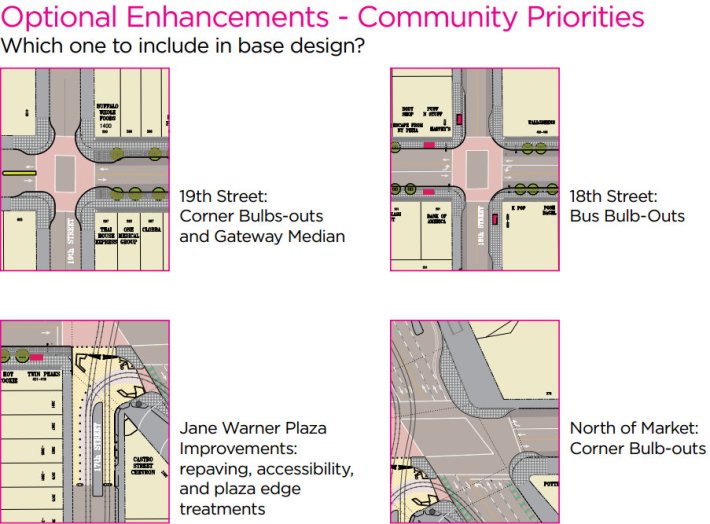
There was no clear favorite option among attendees, though in the Planning Department's survey responses, 17th and Castro was the top priority for improvement among the project's three intersections, with 56 percent naming it the most important.
One of the most contentious options was the 18th Street bus bulb-outs. In the survey, 67 percent of respondents favored the sidewalk extensions, which would provide more room for Muni riders to board and wait, while reducing delays for Muni buses that would no longer have to wait for car traffic to pass before departing a bus stop.
But others, like D8 Supervisor Scott Wiener, thought the potential backup as drivers wait behind loading buses might be too significant. "I'm not sure if that'll be workable," he said.
One improvement Wiener had hoped to see at Castro and 18th was a pedestrian scramble, a traffic signal phase in which pedestrians can cross all sides of the intersection at once while all vehicle traffic has a red light. However, SFMTA planner Dustin White said that the agency's analysis determined that a scramble would cause too much delay for motor traffic, including Muni buses -- a much more significant backup than the proposed bus bulb-outs would entail.
Other proposed sidewalk improvements include "leaning posts," similar to the bannisters seen on the Powell Street Promenade, as well as colored "celebratory" lighting fixtures and images of LGBT "heros and heroines" imprinted on sidewalks for the Rainbow Honor Walk, a separately-funded project. A mid-block mini plaza bulb-out (think: permanent parklet) would also be installed near 19th Street.
The roughly $1 million needed to move poles that hold up Castro's overhead Muni wires to the new curb edge when the sidewalks are extended initially caused concern that the poles would have to remain in place. However, city staffers said they now expect that part of the project to be mostly funded mostly through a Federal Transit Administration grant and some Muni capital funds set aside for wire improvements.
Residents can submit comments via a survey [PDF] to the Planning Department by April 12. Planners expect to present a refined design at a final open house late April or May, and construction would take place from January to October of 2014.
